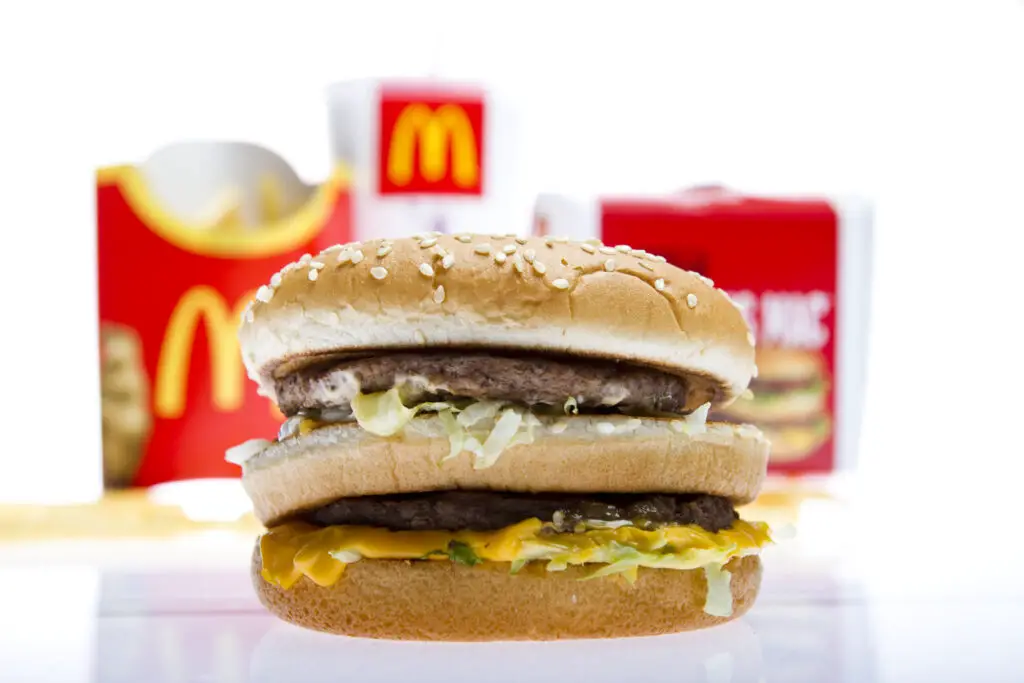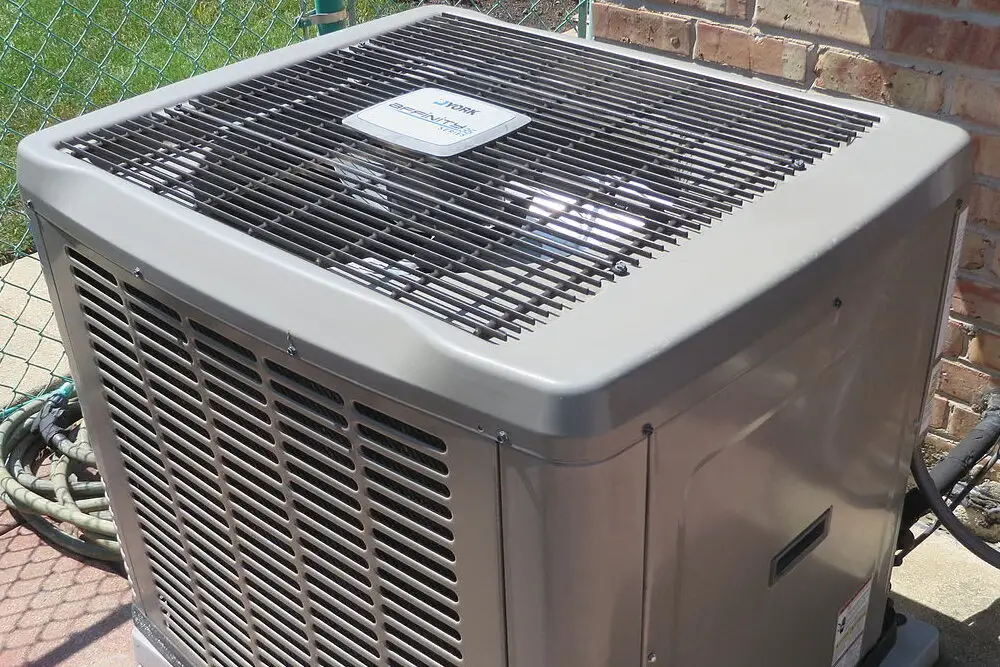1. The Size of American Portions

In the U.S., portions are often so large that you could swear they’re meant for two or three people, not just one. Whether it’s at a restaurant or fast food joint, Americans are known for their “bigger is better” mentality when it comes to food. For Europeans, though, portion sizes are generally much more moderate, which leads to some serious shock when they see what an American-sized plate looks like. It’s not uncommon for someone visiting the States for the first time to be left with half a meal because they simply can’t finish it all says New York Times.
This practice extends to everything, from the gigantic servings of fries to the towering stacks of pancakes at breakfast. Europeans can’t help but laugh at the idea that one person could eat all that in one sitting. It’s almost as if the portion sizes are a test of endurance, not enjoyment. In Europe, sharing plates and smaller meals are the norm, so the American portion culture is definitely a surprising sight for many across the pond adds the Telegraph.
2. The Tipping Culture

In the United States, tipping is not just appreciated—it’s expected. Servers in restaurants typically rely on tips to make up a significant portion of their wages, so if you don’t leave a tip, it’s considered almost offensive. For Europeans, this can be quite confusing, especially since many European countries include service charges in the final bill. In countries like France and Italy, service is often included in the price, so leaving extra money just doesn’t feel necessary says Fox Business.
The whole concept of calculating tips based on service quality and percentage also seems a bit absurd to Europeans. In many parts of Europe, a flat service charge is added, and the idea of leaving a tip for a job well done is less of a social obligation. The American tipping system can be overwhelming for those used to paying exactly what’s on the menu, without worrying about adding an extra 20% just for a good meal adds Food & Wine.
3. Wearing Shoes Indoors

One of the most noticeable habits in American homes is the widespread wearing of shoes indoors. Whether you’re at a friend’s house, a restaurant, or even a hotel, you’ll often find people walking around in their outdoor shoes. In many European countries, though, there’s a strong cultural expectation to remove shoes before entering someone’s home. This practice helps keep the indoors clean, especially since people in Europe often live in smaller spaces.
For Europeans, wearing shoes indoors feels unclean and disrespectful, almost like bringing the outside world into your private space. It’s not uncommon for hosts to offer guests slippers or indoor shoes to keep the floors nice and tidy. The idea of walking around someone’s home in your shoes may seem harmless, but for Europeans, it’s a sign of disregarding cleanliness and respect for personal space.
4. The Obsession with Ice in Drinks

Americans love their ice—almost to an absurd degree. Whether it’s in a soda, water, or even an iced coffee, the American obsession with ice in beverages can leave Europeans scratching their heads. In many European countries, it’s quite common to receive a glass of water or soda without any ice at all. In fact, Europeans prefer their drinks served at a slightly warmer temperature, believing it enhances the flavor and makes it more enjoyable.
For Europeans, the idea of adding a mountain of ice to a drink seems wasteful and unnecessary. They often wonder why you’d want to dilute the flavor of your beverage with all that cold. When Europeans visit the U.S. and are served a drink filled with ice, they can’t help but be surprised at how much colder the drinks are than they’re used to—and how much ice is packed into that glass.
5. The Constant Need for Small Talk

In the U.S., small talk is king. Whether you’re in line at the grocery store or sitting next to someone on a plane, Americans love to strike up casual conversations with strangers. For Europeans, however, this constant need for chitchat can feel a bit awkward and unnecessary. In many European countries, people tend to be more reserved, especially with people they don’t know, and prefer to keep their conversations meaningful rather than just filling the silence.
While Americans might find small talk charming and a way to break the ice, Europeans often find it tiring and superficial. They’re used to diving straight into deeper conversations once they’ve formed a connection, rather than talking about the weather or what’s for lunch. This difference in social interaction can make some Europeans feel like they’re constantly on the spot when visiting the U.S., where silence is often seen as uncomfortable.
6. Excessive Convenience Foods

Americans have a love affair with convenience foods—everything from frozen dinners to fast food is easily accessible and quick to prepare. While this may seem normal to many in the U.S., Europeans are often shocked at how much the average American relies on pre-made, processed meals. In Europe, there’s a stronger tradition of cooking from scratch and valuing fresh, local ingredients, so the idea of buying a pre-packaged meal for convenience is almost foreign.
For Europeans, taking the time to prepare a meal from raw ingredients is part of the culinary experience, and they often view convenience foods as a shortcut that compromises taste and health. The abundance of processed food options in American supermarkets can be overwhelming, especially when they’re faced with an entire aisle dedicated to ready-to-eat meals. The reliance on convenience seems odd to those who pride themselves on culinary traditions that prioritize fresh, homemade dishes.
7. The Overuse of Air Conditioning

In the U.S., air conditioning is everywhere. From shopping malls to office buildings to homes, it seems like you can’t escape the cold, dry air. Europeans, however, are less likely to use air conditioning so extensively, even during the hottest months. Many European homes and buildings are designed to be naturally cool, relying on open windows and ventilation to stay comfortable, which makes air conditioning feel excessive and wasteful to them.
While air conditioning is a lifesaver during a scorching summer day in the U.S., Europeans are more likely to embrace natural cooling methods. They might find it strange to enter a building that feels like a meat locker, especially when the temperature outside is warm and pleasant. To Europeans, it’s not only about saving energy but also about embracing a more sustainable, comfortable way of life that doesn’t involve cranking up the AC every time the temperature rises.
8. The 24/7 Culture

Americans have a knack for keeping things open 24/7, from fast food chains to supermarkets to even gyms. This around-the-clock availability can be convenient for those on tight schedules, but for Europeans, it can feel excessive and unnecessary. In many European countries, businesses tend to close early, especially on Sundays, which is a time for rest and relaxation. The idea of being able to grab groceries or a meal at 3 a.m. seems almost ridiculous to those accustomed to more structured hours.
For Europeans, the constant availability of services in the U.S. can be overwhelming, and they may even feel that it’s a reflection of an overly rushed lifestyle. They appreciate the slower pace that comes with businesses taking time to rest and close for the day. While Americans may find the 24/7 culture convenient, it’s something that many Europeans view as unnecessary and perhaps even unhealthy.
9. The Extreme Enthusiasm for Sports

Americans’ passion for sports can sometimes feel all-consuming, and to Europeans, it can be a little much. From tailgating parties to elaborate stadiums and constant sports coverage on TV, Americans take their sports very seriously. For many Europeans, who may not be as invested in sports culture, this level of enthusiasm can seem over the top. They can’t help but laugh when they see the sheer volume of time, money, and energy that goes into supporting sports teams.
In Europe, while sports are important, they often don’t take up the same level of daily conversation and devotion. For example, Europeans may find the obsession with American football particularly perplexing, as it’s not as widely followed in many parts of Europe. While sports fans in Europe enjoy their teams and matches, the scale of American sports culture, with its endless merchandise and fervent fan base, can seem like an entire lifestyle rather than just a pastime.
10. The Lack of Public Transportation in Some Areas

Americans often rely heavily on cars for getting around, and in many places, especially in suburban areas, public transportation is sparse or non-existent. Europeans, on the other hand, are used to efficient and widespread public transport systems, making it easy to get from one place to another without a car. In cities like Paris, London, and Berlin, the metro, buses, and trains are an integral part of daily life, and owning a car is not always necessary.
The idea of driving everywhere, especially in major cities like Los Angeles, where traffic is notoriously terrible, feels strange to Europeans who are accustomed to hopping on a train or bus. The lack of a comprehensive public transport system in many parts of the U.S. can be frustrating and a bit puzzling. Europeans often wonder why Americans don’t embrace more sustainable and accessible forms of transportation, especially when the alternatives are so effective in their own countries.
11. Over-the-Top Customer Service

Customer service in the U.S. often goes to great lengths to make sure you’re satisfied, sometimes even to the point of feeling insincere. Whether it’s a cashier asking if you need help every few minutes or a hotel staff member greeting you with a personal introduction, the level of attentiveness can be overwhelming for Europeans. In many European countries, customer service is more subdued, with staff giving you space to make decisions without constantly hovering.
While Americans might view this as excellent service, Europeans can’t help but find it a bit much. In places like the U.K. or France, customer service is often less in-your-face and more about being available when you need assistance. Europeans prefer a more relaxed interaction where they don’t feel pressured to respond to every offer of help, and they’re likely to appreciate when the staff keeps their distance, allowing them to enjoy their experience at their own pace.
12. The Love for Reality TV

Americans are notorious for their obsession with reality TV, from shows like The Bachelor to Keeping Up with the Kardashians. These shows dominate TV schedules, and millions of people tune in religiously to follow the drama and gossip. For Europeans, however, reality TV is often seen as a guilty pleasure at best, or something to be avoided at all costs. The idea of watching strangers’ lives unfold on screen, particularly when it’s heavily scripted or over-the-top, doesn’t quite have the same appeal.
While some European countries have their own versions of reality shows, they tend to be less invasive and more focused on actual talent or competition. Europeans might find American reality TV shows to be excessively dramatic and sometimes a bit embarrassing. In their eyes, these programs feel more like a distraction from meaningful entertainment, and the cultural obsession with reality TV may seem like a quirky aspect of American pop culture.
